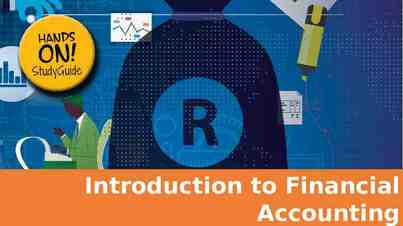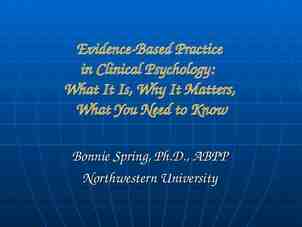CHEM 1111 General Chemistry I Laboratory – Fall 2011 TA’s Contact
19 Slides1.06 MB
CHEM 1111 General Chemistry I Laboratory - Fall 2011 TA’s Contact Information Name : Imalka Munaweera Office : SLC 3.409 Email Address : [email protected] Office Hour : Friday 11 a.m -12 p.m
General Course Information Course Description These courses reinforce the concepts of Freshman Chemistry in the lab via experiments. Students are offered the opportunity to acquire basic laboratory skills and an appreciation for the presence of chemistry in daily living. The experiments are designed to demonstrate concepts including properties of inorganic substances, principles of structure and bonding, and elementary quantitative analysis.
Required Texts & Materials Laboratory Manual for General Chemistry laboratory I (CHEM 1111) ISBN: 9781121288386 Z-87 rated Safety Glasses or Goggles Combination Locks A Composition Notebook and a Calculator Students are financially responsible for items checked out of the stockroom
Class Attendance It is typical for the laboratory activities to utilize the entire 180 minutes of class time such that one can not simultaneously enroll in other classes whose meeting days and times conflict with those of CHEM 1112. No cell phones or computers are allowed in the chemistry laboratories. If you need to make an emergency phone call, please step outside.
Make-Up Labs There are no make-up lab dates for any experiments! Workshops Students will work in groups during the first 45 min of the lab period. Workshops count for 10% of the course grade.
Safety IMPORTANT: In accordance with University and Chemistry Department safety rules, any time anyone is in a lab, Z87-rated safety eyewear must be worn.
Summary of Points: Notebook/workshops Lab Readiness Lab Write Ups Pts. 20 10 70 Total 100 For details please see grade breakdown for each experiment. Grading (credit) Criteria
Measurements Mass Mass is the amount of matter in something In the metric system mass is measured in kilograms and grams Mass measurement
Volume Volume is the quantity of three-dimensional space enclosed by some closed boundary, for example, the space that a substance (solid, liquid or gas) or shape occupies or contains. The metric system includes the liter (L) and milliliter (ml) as a unit of volume Volume measurement A graduated cylinder A pipette
Graduated Cylinder Graduated Cylinder is an instrument used to transfer liquids. Graduated cylinders come in various sizes.
Pipette A pipette is an instrument used to transfer liquids. Pipettes come in various sizes. Pipetting is used to quantitatively transfer exact volumes of a liquid from one container to another. Pipettes are loaded using pipette pumps. The pipette pumps commonly encountered are either rollers or bulbs.
Reading the meniscus correctly
The volume of solution in a pipette is determined by reading the bottom of the meniscus at eye level. The volume is recorded by using all certain digits and one uncertain digit. Certain digits are obtained from calibration marks. Uncertain digits (the last digit in the number) are estimated between calibration marks. Some examples are shown below: 4.49 mL reading 4.88 mL reading 5.00 mL reading
Significant figures The significant figures (also called significant digits) of a number are those digits that carry meaning contributing to its precision. A digit is a symbol (a numeral symbol such as "3" or "7") used in combinations (such as "37") to represent numbers in positional numeral systems. The precision of a measurement system, also called reproducibility or repeatability is the degree to which repeated measurements under unchanged conditions show the same results.
Identifying significant digits The rules for identifying significant digits when writing or interpreting numbers are as follows: All non-zero digits are considered significant. Example, 91 has two significant digits (9 and 1), while 123.45 has five significant digits (1, 2, 3, 4 and 5). Zeros appearing anywhere between two non-zero digits are significant. Example: 101.12 has five significant digits: 1, 0, 1, 1 and 2. Leading zeros are not significant. Example, 0.00052 has two significant digits: 5 and 2. Trailing zeros in a number containing a decimal point are significant. Example, 12.2300 has six significant digits: 1, 2, 2, 3, 0 and 0. The number 0.000122300 still has only six significant digits (the zeros before the 1 are not significant). In addition, 120.00 has five significant digits. This convention clarifies the accuracy of such numbers; for example, if a result accurate to four decimal places is given as 12.23 then it might be understood that only two decimal places of accuracy are available. Stating the result as 12.2300 makes clear that it is accurate to four decimal places.
Multiplication or Division Keep the same number of sig figs as the factor with the least number of sig figs. Example: 1.2 x 4.56 5.472 on the calculator. But since the one factor has only 2 sig figs, the answer must be rounded to 2 sig figs or 5.5. Addition or Subtraction Keep the same number of decimal places as the factor with the least amount. Example: 1.234 5.67 6.904 on the calculator. But since the one factor has only 2 decimal places, so must the answer. Thus the result must be rounded to 6.90 (where the zero is significant )
Let's look at an example where significant figures is important Measuring volume in the laboratory. This can be done in many ways: using a beaker with volumes marked on the side, a graduated cylinder, or a buret. A rule of thumb: read the volume to 1/10 or 0.1 of the smallest division. (This rule applies to any measurement.) This means that the error in reading (called the reading error) is 1/10 or 0.1 of the smallest division on the glassware. Beaker The smallest division is 10 mL, so we can read the volume to 1/10 of 10 mL or 1 mL. The volume we read from the beaker has a reading error of 1 mL. The volume in this beaker is 47 1 mL. You might have read 46 mL; your friend might read the volume as 48 mL. All the answers are correct within the reading error of 1 mL. So, How many significant figures does our volume of 47 1 mL have? Answer - 2! The "4" we know for sure plus the "7" we had to estimate.
Graduated cylinder The smallest division of this graduated cylinder is 1 mL. Therefore, our reading error will be 0.1 mL or 1/10 of the smallest division. An appropriate reading of the volume is 36.5 0.1 mL. An equally precise value would be 36.6 mL or 36.4 mL. How many significant figures does our answer have? 3! The "3" and the "6" we know for sure and the "5" we had to estimate a little. Burette The smallest division in this buret is 0.1 mL. Therefore, our reading error is 0.01 mL. A good volume reading is 20.38 0.01 mL. An equally precise answer would be 20.39 mL or 20.37 mL. How many significant figures does our answer have? 4! The "2", "0", and "3" we definitely know and the "8" we had to estimate.
























